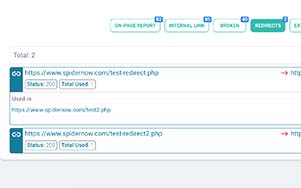Understanding Internal Linking
Internal linking refers to the practice of linking one page of a website to another page within the same domain. It plays a crucial role in SEO as it helps search engines discover and index your website's content more effectively.
When you create internal links, you are essentially creating pathways for search engine crawlers to navigate through your website. This allows them to discover new pages, understand the relationships between different pages, and determine the importance and relevance of each page.
Internal linking also helps distribute link equity or authority within your website. When you link to a page from another page, you are passing a portion of the linking page's authority to the linked page. This can help improve the rankings of the linked page in search engine results.
Developing Effective Internal Linking Strategies
Developing effective internal linking strategies is crucial for maximizing the SEO benefits of internal linking. It involves strategically placing internal links within your content to guide users and search engines to relevant pages on your website.
One effective strategy is to use keyword-rich anchor text for your internal links. By using descriptive and relevant anchor text, you can provide additional context to both users and search engines about the linked page's content. This can help search engines understand the relevance of your content and improve your website's rankings for specific keywords.
It's also important to regularly review and update your internal links to ensure they are still relevant and functional. Broken or outdated links can negatively impact user experience and hinder search engine crawlers from indexing your website properly.
How does internal linking impact analytics metrics for websites?
Internal linking impacts analytics metrics for websites in several ways:
1. Improved Pageviews: Internal links encourage users to click through to related pages and explore additional content, leading to higher pageviews per session and increased engagement with your website.
2. Reduced Bounce Rates: Relevant internal links provide users with pathways to explore further within your website, reducing bounce rates and increasing the likelihood of retaining visitors and converting them into leads or customers.
3. Enhanced Time on Site: Internal linking increases the time users spend on your website by guiding them to relevant pages and encouraging them to consume more content, which can lead to higher session durations and improved user engagement.
Better Conversion Rates: Strategic internal linking can guide users through the sales funnel, highlighting key products, services, or calls-to-action (CTAs) and encouraging conversions, such as sign-ups, downloads, or purchases.
How do internal links contribute to SEO?
Internal links contribute to SEO in several ways:
1. Improved Crawling and Indexing: Internal links provide pathways for search engine crawlers to discover and navigate through the various pages of a website, ensuring that all content is properly indexed and included in search engine results.
2. Distribution of Page Authority: Internal links pass authority and relevance from one page to another within the same domain, helping to distribute link equity throughout the site and boost the ranking potential of important pages.
3. Keyword Optimization: Anchor text used in internal links provides context and relevance to search engines about the linked page's content. By using descriptive anchor text that includes relevant keywords, businesses can optimize internal links for improved SEO.
Enhancing Website Navigation
One of the key benefits of internal linking is enhancing website navigation. By strategically placing internal links throughout your website, you can provide users with clear pathways to navigate through your content. This can improve their overall experience and make it easier for them to find the information they are looking for.
Effective website navigation involves using menus, breadcrumbs, and internal links to create a logical and intuitive structure. By organizing your content into different categories and subcategories, you can guide users to relevant pages and help them explore your website more efficiently.
Boosting SEO and Organic Rankings
Internal linking is a powerful SEO strategy that can boost your website's visibility and organic rankings. By strategically linking your pages, you can help search engines understand the relevance and importance of your content.
When you create internal links using relevant and descriptive anchor text, you are providing additional context to search engines about the linked pages' content. This helps search engines understand the relationships between different pages and improves the overall relevance of your website.
Internal linking also helps distribute link equity or authority within your website. When you link to a page from another page, you are passing a portion of the linking page's authority to the linked page. This can help improve the rankings of the linked page in search engine results.
Effective Internal Linking Strategies
To maximize the benefits of internal linking, it's important to implement effective strategies. Here are some key strategies to consider:
1. Use descriptive and keyword-rich anchor text: When creating internal links, use anchor text that accurately describes the linked page's content. This helps search engines understand the relevance and context of the linked page.
2. Prioritize linking to high-quality and authoritative pages: Linking to valuable and informative content within your website not only enhances the user experience but also improves your website's credibility and rankings.
3. Create a logical and intuitive website structure: Organize your content into different categories and subcategories to create a clear and cohesive structure. This helps users and search engines navigate through your website more effectively.
4. Regularly review and update your internal links: Ensure that your internal links are still relevant and functional. Remove any broken or outdated links that may hinder user experience and search engine crawling.
By implementing these strategies, you can optimize your internal linking efforts and improve your website's visibility, rankings, and user engagement.










